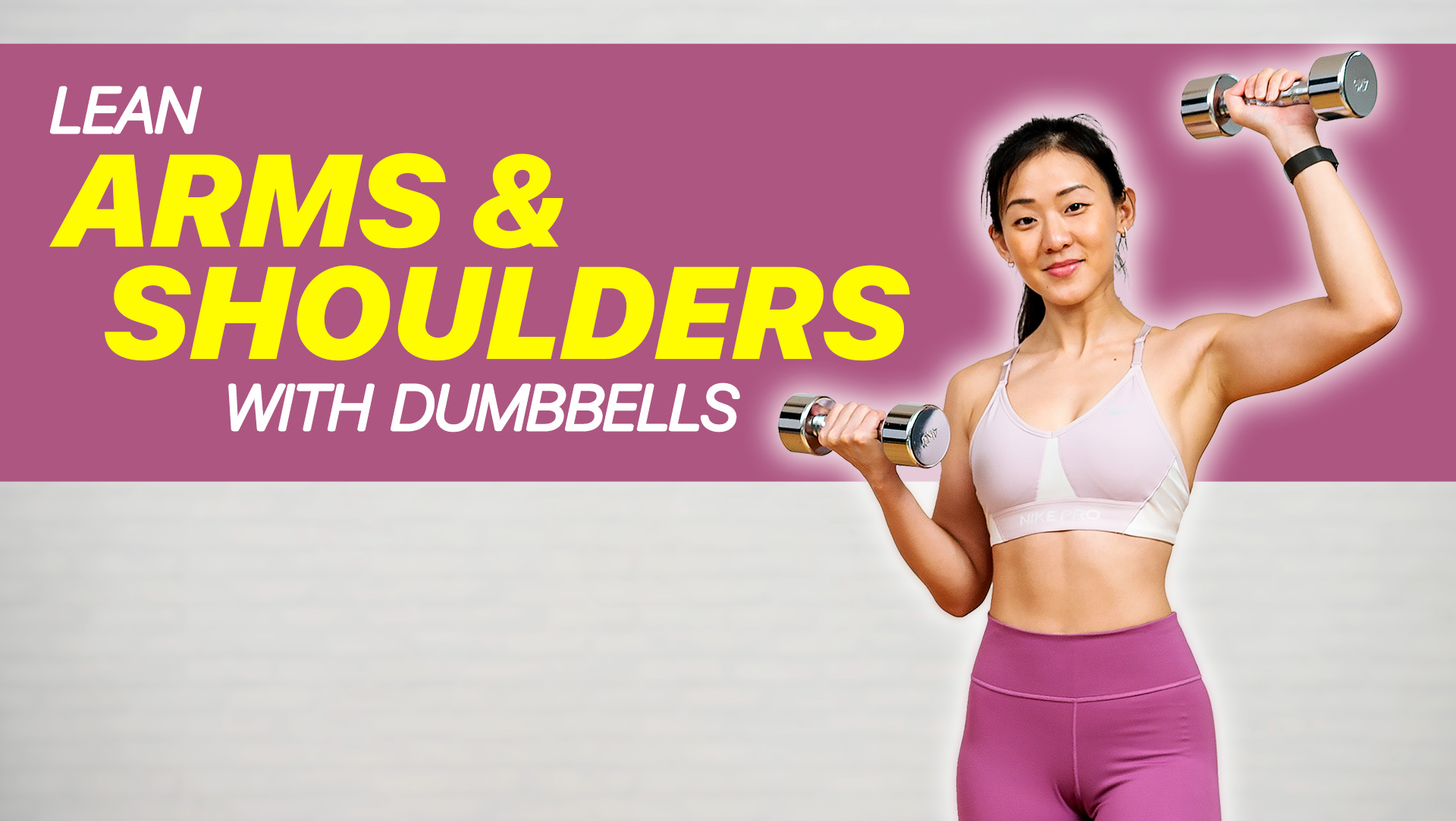Can you identity yourself with one of these postures?
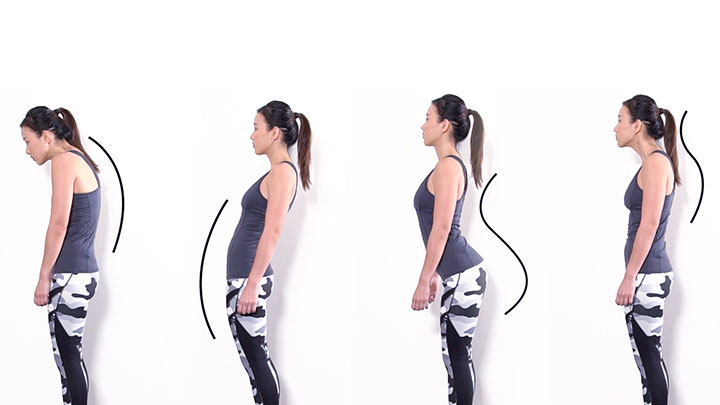
Nowadays, our lifestyles are causing to have really bad posture from poor sitting habits such as slouching, sitting in front of the computer for a extended period of time, constantly texting and looking down at your phone, carrying really heavy bags or ladies, wearing high heels 24/7.
BAD POSTURE
When our spine is positioned in an unnatural alignment, the curves are exaggerated, which can be due to tight or weak muscles, resulting in bad posture. Uncorrected posture, overtime can lead to chronic pains.
GOOD POSTURE
A good posture is when you hold your body upright where the least strain is placed on supporting muscles and ligaments during movement.
It is extremely important to have a good posture! When you have proper posture, it improves bodily alignment, eliminates back and neck pain, improves circulation, improves digestion, improves breathing, makes you look taller, and also makes you look and feel confident.
Let talk about the 4 common types of bad postures and how you can change it.
- Lumbar Lordosis
- Thoracic Kyphosis or Hunched back
- Sway Back
- Forward Head
LUMBAR LORDOSIS
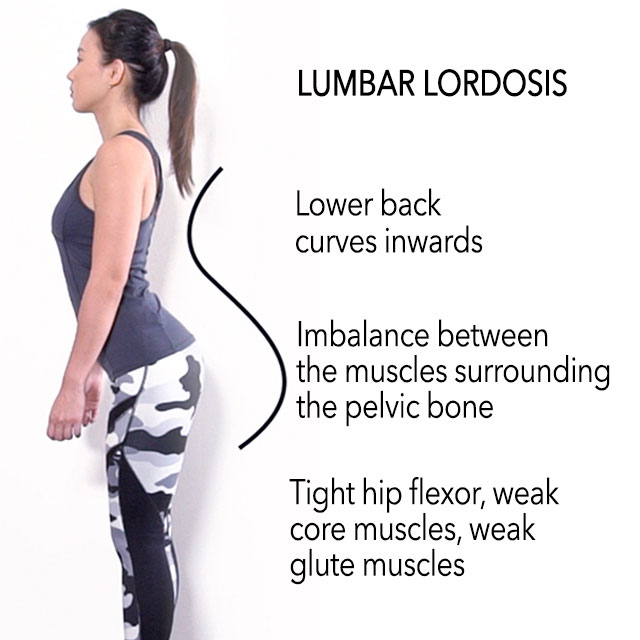
- Your lower back curves inwards more than it would naturally do.
- There’s an imbalance between the muscles surrounding the pelvic bone.
- Caused by sitting too much and not stretching, which shortens the hip flexors.
What we’re trying to fix is the:
- Tight hip flexor
- Weak core muscles
- Weak glute muscles
Exercises
- Hip Flexor Stretch
Place the left knee on the floor directly under the left hip and the right foot in front of the right hip in a 90degree angle.
Then lean forward into your right hip and you will feel the stretch on the left hip flexor. Hold for 30 – 45 secs and change side. Repeat for a total of 3 – 4 rounds.
- Knee to Chest Stretch
Lie flat on your back and bring both knees close to your chest. You will feel the stretch on your lower back, hamstrings and glutes.
- Cat Cow Stretch
Start on all fours in a neutral position, back flat and abs engaged. On the exhale, round your spine up towards the ceiling. Tuck your chin towards your chest, releasing tension from the neck. On the inhale, arch your back, lift your head and tailbone up towards the sky. This helps release tension from the hips and back.
- Hip Bridge
Lie with your back and both feet flat on the floor. Slowly draw your abdominals up toward the ceiling, squeezing your glutes right at the top for 5 seconds, release back to starting position and repeat. This exercise will strengthens the glute muscles and to release tension from the lower back.
- Abdominal Crunch
Another basic exercise to perform is abdominal crunch, which will help to strengthen the core muscles. Lie on you back with both feet flat on the floor. Slowly crunch up by lifting the shoulders off the floor, hold for 2 seconds, lower yourself back down and repeat.
Thoracic Kyphosis or Hunched Back
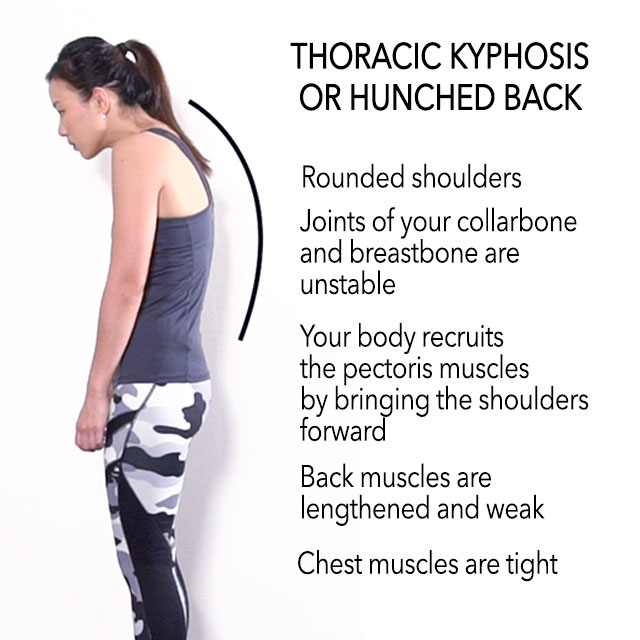
- You have rounded shoulders. The joints of your collarbone and breastbone are unstable. In order to stabilize this joint, your body recruits the pectoris muscles by bringing the shoulders forward.
- When your shoulders are constantly pulled forward, the muscles in your back become lengthened and weak and your chest muscles are tight.
- This can be caused by sitting with a bad posture or hunched over a computer over an extended period of time.
What we’re trying to fix is the
- Tight Chest Muscles
- Weak Back Muscles
Exercises
- Shoulder Packing
The first exercise to do is simple to be aware and correct your posture by drawing both shoulders down and bring them back to open up your chest. This is the neutral position you should be in.
- Chest Open
To stretch your chest, place both hands at the back of your head. Squeeze your shoulder blades together to create tension in the upper back and shoulders, while opening up the chest. Hold this position for 10 secs, release and repeat 5 times! You can do this standing or while sitting at your desk.
- Bird Dog
Start on all fours in a neutral position. Keeping your back and pelvis still, reach your right arm forward and left leg back. Don’t let your hips rock or lower back arch, so pull your abs in. Hold for 5 seconds, return to the starting position and repeat on the opposite side. Complete 10 reps on each side.
- Superman
Start by lying on your belly, face down, arms extended forward. Lift your arm, shoulders and legs few inches off the floor. Squeeze your glutes, lower back and bend your elbows to bring your arms back to squeeze the mid back. Hold for 2 seconds. Return to starting position and repeat for at least 10 reps. This exercise will strengthens the glutes and back muscles.
- Dart Beats
Start by lying on your belly, face down, arms by your side, palms facing. Engage your glues and lower back muscles to let your upper body and legs few inches off the floor. Exhale and pulse for 10 beats and repeat.
- Cobra
Start face down and place your hands close to your chest, elbows pointed back. Push up to lift your chest off the ground. Look up and feel the stretch on your lower back. Hold for 10 counts, return to starting position and repeat for another 3 more times.
FORWARD HEAD
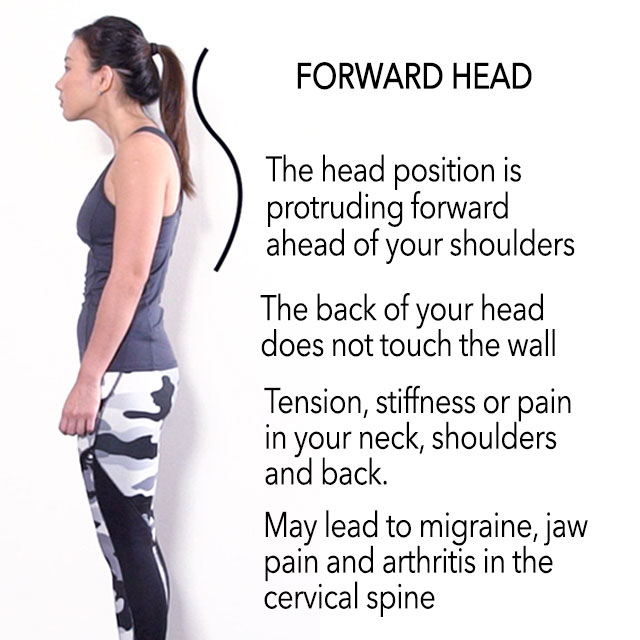
- The head position is protruding forward ahead of your shoulders. If you were to lean against the wall, the back of your head does not touch the wall.
- This is very common in people who sit in front of a computer for most of the day.
- If left untreated, this can cause tension, stiffness or pain in your neck, shoulders and back. To make matters worse, it can also lead to migraine, jaw pain and arthritis in the cervical spine.
What we’re trying to fix is the
- Weak front neck muscle
- Short, tight and strained back neck muscle
Exercises
- Chin Tucks
Simple draw your chin in towards your neck. Hold that position for 10 secs, release and repeat.
- Head Stretch
Use your hands to gentle stretch your neck down, up and side ways. Hold each position for at least 5 seconds. Repeat 3 – 4 rounds. This will help to release the tension on the neck.
- Head with Shoulder Rotation
In a neutral position, place both arms by the side of your head. Gently rotate the neck and shoulders to one side and feel the slight squeeze on your upper back, and shoulders. Release and repeat on the other side.
- Shoulder Blade Squeeze
Move your shoulders forward, up and back in a circular motion and squeeze your shoulder blades for 2 seconds. Complete 10 reps. This exercise will help to strengthen your upper back muscles to support your neck.
SWAY BACK
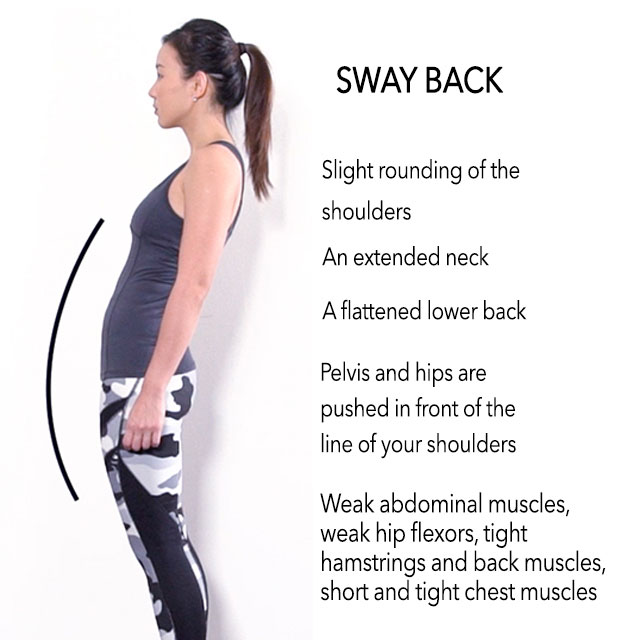
- You have a slight rounding of the shoulder, an extended neck and a flattened lower back.
- Your pelvis and hips are pushed in front of the line of your shoulders.
What we’re trying to fix is the and strengthen are
- Weak abdominal muscles
- Weak hip flexors
- Tight hamstrings and back muscles
- Short and tight chest muscles
Exercises
- Hamstring Stretch
Lie down on the floor face up with your knees bent and feet flat. Straighten one leg and gently pull your leg towards you while keeping both hips on the floor. You can either hold on to the back of your leg or your calf. Hold the stretch for at least 10 seconds. Release and repeat on the other side. For a deeper hamstring stretch, use a towel.
- Chest Stretch
Stand tall, extend both arms out to your side with your thumbs facing up. Draw your shoulder blades together to squeeze your upper back and at the same time, you will feel the deep stretch on your chest muscles. Hold for at least 10 counts, release and repeat.
- Hip Bridge
Lie with your back and both feet flat on the floor. Slowly draw your abdominals up toward the ceiling, squeezing your glutes right at the top for 5 seconds, release back to starting position and repeat. This exercise will strengthens the glute muscles and to release tension from the lower back.
- Plank
Keep your elbows bent at 90 degrees, directly beneath your shoulders. Engage your core muscles to keep your body in a straight line from your head to your feet. Hold this position as long as you can. Planking helps develop strength in the core, shoulders, arms and glutes, which will help to improve your posture.
- Child’s Pose
Start in a kneeling position. Push you butt back to lower your body into a Child’s Pose with your arms stretched forward. Draw your chest as close to the floor as possible to really stretch the entire back out.
All these exercise might feel or seem strange to begin with, but perform them on a daily basis and over time, you will notice that your posture will start to improve.


